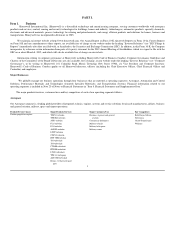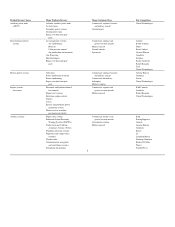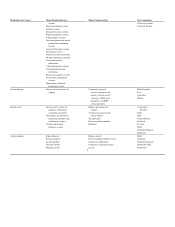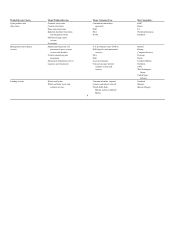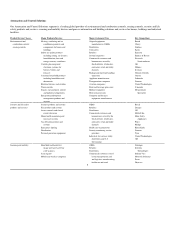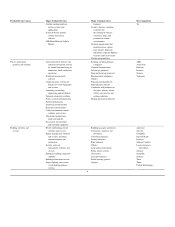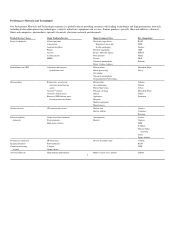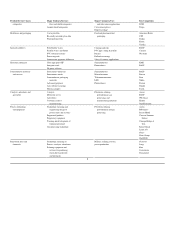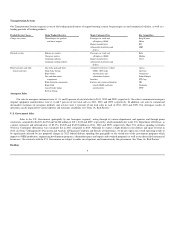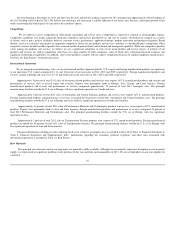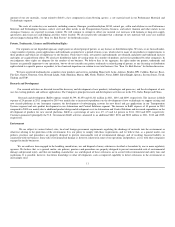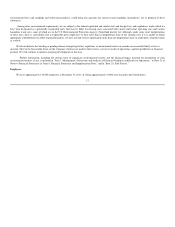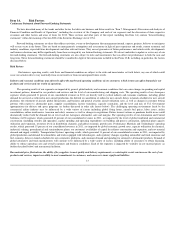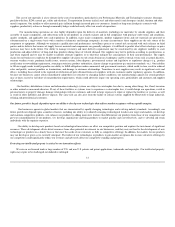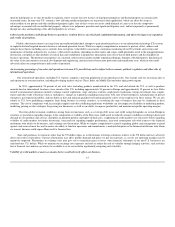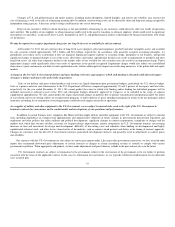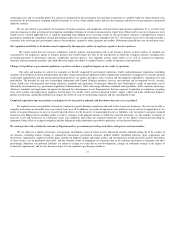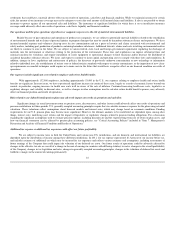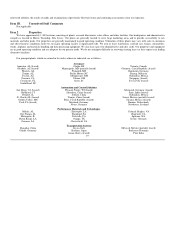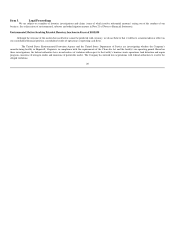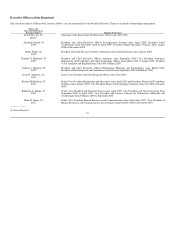Honeywell 2011 Annual Report Download - page 14
Download and view the complete annual report
Please find page 14 of the 2011 Honeywell annual report below. You can navigate through the pages in the report by either clicking on the pages listed below, or by using the keyword search tool below to find specific information within the annual report.
amount of our raw materials, except related to R240 (a key component in foam blowing agents), a raw material used in our Performance Materials and
Technologies segment.
The costs of certain key raw materials, including cumene, fluorspar, perchloroethylene, R240, natural gas, sulfur and ethylene in our Performance
Materials and Technologies business, nickel, steel and other metals in our Transportation Systems business, and nickel, titanium and other metals in our
Aerospace business, are expected to remain volatile. We will continue to attempt to offset raw material cost increases with formula or long-term supply
agreements, price increases and hedging activities where feasible. We do not presently anticipate that a shortage of raw materials will cause any material
adverse impacts during 2012. See "Item 1A. Risk Factors" for further discussion.
Patents, Trademarks, Licenses and Distribution Rights
Our segments are not dependent upon any single patent or related group of patents, or any licenses or distribution rights. We own, or are licensed under,
a large number of patents, patent applications and trademarks acquired over a period of many years, which relate to many of our products or improvements to
those products and which are of importance to our business. From time to time, new patents and trademarks are obtained, and patent and trademark licenses
and rights are acquired from others. We also have distribution rights of varying terms for a number of products and services produced by other companies. In
our judgment, those rights are adequate for the conduct of our business. We believe that, in the aggregate, the rights under our patents, trademarks and
licenses are generally important to our operations, but we do not consider any patent, trademark or related group of patents, or any licensing or distribution
rights related to a specific process or product, to be of material importance in relation to our total business. See "Item 1A. Risk Factors" for further discussion.
We have registered trademarks for a number of our products and services, including Honeywell, Aclar, Ademco, Bendix, BW, Callidus, Enovate, Esser,
Fire-Lite, Garrett, Genetron, Gent, Howard Leight, Jurid, Matrikon, Maxon, MK, North, Notifier, Novar, RMG, Silent Knight, Spectra, System Sensor, Trend,
Tridium and UOP.
Research and Development
Our research activities are directed toward the discovery and development of new products, technologies and processes, and the development of new
uses for existing products and software applications. The Company's principal research and development activities are in the U.S., India, Europe and China.
Research and development (R&D) expense totaled $1,799, $1,450 and $1,321 million in 2011, 2010 and 2009, respectively. The increase in R&D
expense of 24 percent in 2011 compared to 2010 was mainly due to increased expenditures on the development of new technologies to support existing and
new aircraft platforms in our Aerospace segment, the development of turbocharging systems for new diesel and gas applications in our Transportation
Systems segment and new product development in our Automation and Control Solutions segment. The increase in R&D expense of 10 percent in 2010
compared to 2009 was mainly due to additional product design and development costs in Automation and Control Solutions and increased expenditures on the
development of products for new aircraft platforms. R&D as a percentage of sales was 4.9, 4.5 and 4.4 percent in 2011, 2010 and 2009, respectively.
Customer-sponsored (principally the U.S. Government) R&D activities amounted to an additional $867, $874 and $852 million in 2011, 2010 and 2009,
respectively.
Environment
We are subject to various federal, state, local and foreign government requirements regulating the discharge of materials into the environment or
otherwise relating to the protection of the environment. It is our policy to comply with these requirements, and we believe that, as a general matter, our
policies, practices and procedures are properly designed to prevent unreasonable risk of environmental damage, and of resulting financial liability, in
connection with our business. Some risk of environmental damage is, however, inherent in some of our operations and products, as it is with other companies
engaged in similar businesses.
We are and have been engaged in the handling, manufacture, use and disposal of many substances classified as hazardous by one or more regulatory
agencies. We believe that, as a general matter, our policies, practices and procedures are properly designed to prevent unreasonable risk of environmental
damage and personal injury, and that our handling, manufacture, use and disposal of these substances are in accord with environmental and safety laws and
regulations. It is possible, however, that future knowledge or other developments, such as improved capability to detect substances in the environment or
increasingly strict
11


